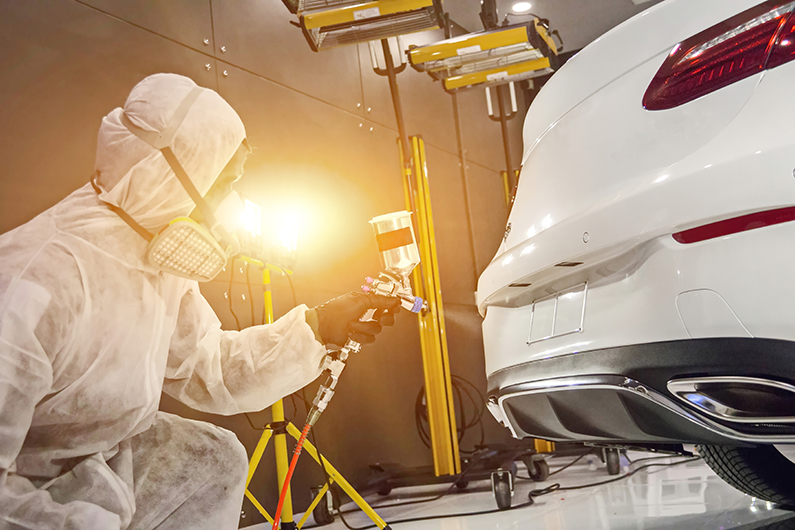More news
- Special report: New UK government and the impact on Britain’s chemical regulations
- Market report: French paint market will weather the storm, say experts
- Market report: India and the South Asia paint and coatings market
- South Africa market report: Paint sales remain steady but new government looks set to boos...
- Market report: Industrial paints in Pakistan

Key growth drivers for 2K coatings include:
- Automotive industry: The automotive industry is a major user of 2K coatings, as these coatings provide superior protection against weathering, corrosion and abrasion. With the increasing demand for high-quality automotive finishes, the demand for 2K coatings is expected to grow.
- Furniture industry: The furniture industry is another major user of 2K coatings, as these coatings provide a durable and high-quality finish for furniture. With the growing demand for high-quality furniture, the demand for 2K coatings is expected to increase.
- Advancements in technology: The development of new technologies has led to the introduction of advanced 2K coatings that offer superior performance and durability. As the technology continues to improve, the demand for these coatings is expected to increase.
- Environmental regulations: With the increasing concern for the environment, there is a growing demand for environmentally friendly coatings. 2K coatings are being developed that are low in volatile organic compounds (VOCs) and are, therefore, more environmentally friendly. As environmental regulations continue to tighten, the demand for these coatings is expected to grow.
Beyond tradition: Exploring new applications for 2K coatings
As emerging markets continue to grow, the demand for high-quality coatings is also increasing. This presents an opportunity for 2K coatings manufacturers to expand their operations in these markets and establish a strong presence.
The use of powder coatings is also growing in popularity, as they are environmentally friendly and offer superior durability. This presents an opportunity for 2K coatings manufacturers to develop new products that can compete with powder coatings and meet the changing needs of customers.
2K coatings have traditionally been used in the automotive, construction and furniture industries. However, there is an opportunity to explore new applications for these coatings, such as in the marine, aerospace and defence industries. This presents an opportunity for manufacturers to diversify their product offerings and tap into new markets.
The future is digital
Advances in coating technologies are leading to the development of new 2K coatings with improved performance properties, such as enhanced scratch resistance, chemical resistance and adhesion. These advancements are enabling manufacturers to offer coatings with superior durability and protection.
There is also a shift towards waterborne coatings in many industries, driven by their lower VOC emissions and improved environmental performance. This trend is creating opportunities for manufacturers to develop waterborne 2K coatings that offer superior performance and durability.
Digital technologies are being increasingly adopted in the coatings industry, enabling manufacturers to improve production efficiency, quality control and supply chain management. The use of digital technologies is also enabling manufacturers to offer more personalised and customised products, tailored to the specific needs of customers.
The main reason behind the growing market is the rising demand from construction of residential and commercial buildings. Besides construction projects in developing countries, the rise in the demand for maintaining durability, protection from acid rain and bad weather and the need for long time stability has further boosted the market of protective coatings globally.
2K coatings provide excellent waterproofing solutions by preventing water leaks. The coatings act as a barrier, which enables structures such as bridges, floors, buildings, as well as exterior and interior walls to function in demanding situations and environments.
2K Coatingss are used for protecting and maintaining the existing substrates to extend lifestyle. Many industries have systems that run on continuous operations. Several of them are exposed to environmental changes or involve the use of harsh materials. This results in the deterioration in the structure of the equipment or decline in the efficiency of the process, which causes shutdown of the plant or stoppage in the overall operations. The coatings help in preventing these issues, thereby saving on the cost of shutdown and replacement of equipment.
The marine industry is prone to damage to vessels, ships and docks due to the corrosive action of seawater. Waterproofing coats and joints & crack filling coats are widely used for maintenance in these industries. These protective coatings are generally applied on marine parts made of steel, aluminium, fibreglass and other substrates. They are used for cargo vessels, tankers, tug barge, workboats, motor launch and hydrofoil.
Civil building and infrastructure industry to remain a key segment
2K Coatingss are used in the civil building and infrastructure industry for flooring, wood finishes, interior & exterior walls, bridges, swimming pools, doors and ceilings.
This particular type of coating forms a thin layer on the surfaces on which they are applied and is used for increasing the longevity and stability of the structures. Bridges, highways and infrastructure projects are essentially in need of long-time stability and the ability to withstand harsh weather conditions, such as acid rain.
Degradation of structures results in rusting of metal surfaces, fading, cracking of concrete, leakages and growth of micro-organisms, such as algae and fungi. These may directly or indirectly affect the life of buildings and increase the cost of replacement and maintenance. Waterproofing coatings are usually applied to walls and floorings in bathrooms, kitchens, hotels and swimming pools to prevent leakages and moisture deteriorating the structures.
These insights are based on a report by Future Market Insights



